The Courtauld Gallery is the name of an art museum that is housed at Somerset House in London.
It’s situated on the Strand, a major thoroughfare in the City of Westminster, Central London. This is not too far to the northeast from the National Gallery, one of the most popular museums in the city.
It houses the art collection of the Courtauld Institute, a college of the University of London that is dedicated to art history.
The Courtauld Institute was established by rich industrialist and art collector Samuel Courtauld (1876-1947) after who it was named. He bequeathed his collection to the institute in 1948 and made several donations after it was established.
Although the collection size of just 530 paintings might seem small, it consists of some of the greatest masterpieces ever created.
Let’s take a closer look at some of the most famous paintings at the Courtauld Gallery.
1. The Seilern Triptych – Robert Campin
- Date created: 1415
- Dimensions: 65.2 x 107.2 centimeters (25.6 x 42.2 inches)
The Seilern Triptych is a fascinating altarpiece that is attributed to Early Netherlandish painter Robert Campin (1375-1444). He was an important Gothic artist who was pivotal in the transition between medieval art and Renaissance art in the northern part of Europe.
The painting is decorated with gold leaf and has been dated to either the 1410s or 1420s. it’s considered to be the earliest of only two works that are attributed to the artist. It depicts 3 scenes from the passion of Christ including the Crucifixion, the Burial, and the Resurrection.

2. The Holy Trinity with Saints – Sandro Botticelli
- Date created: 1491-1493
- Dimensions: 215 × 192 centimeters (85 × 76 inches)
The Holy Trinity with Saints or “Pala delle Convertite” is a monumental altarpiece painted by Sandro Botticelli (1445-1510), the Renaissance master from Florence. It was completed in the early 1490s and was intended to decorate the church of Santa Elisabetta delle Convertite in the artist’s home city.

It was commissioned by the local guild of Doctors and Pharmacists. The church in which it was to hang was dedicated to housing former prostitutes. The patron saint of this church was Mary Magdalene. She is depicted on the left and resembles the Penitent Magdalene, a contemporary sculpture by Donatello.
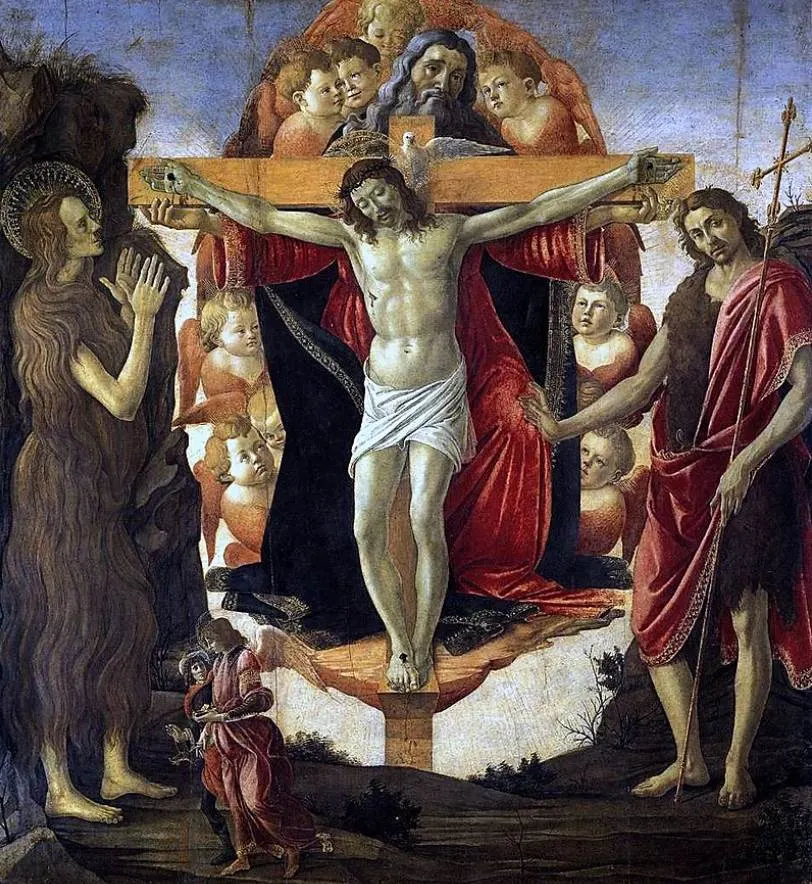
3. Adam and Eve – Lucas Cranach The Elder
- Date created: 1526
- Dimensions: 117 x 80 centimeters (46 x 31.4 inches)
The painting of Adam and Eve is one of the multiple versions of these Biblical figures Lucas Cranach The Elder (1472-1553). He was the official court painter to the Electors of Saxony and one of the leading figures of the German Renaissance in the 16th century.
The painting at the Courtauld Gallery is one of several versions that depicts a blooming apple tree. Other paintings depict the subjects either separately or below a tree without fruits. Other versions are on display all around the world, including at the Uffizi Gallery in Florence, The Kunsthistorisches Museum in Vienna, and the Art Institute of Chicago.
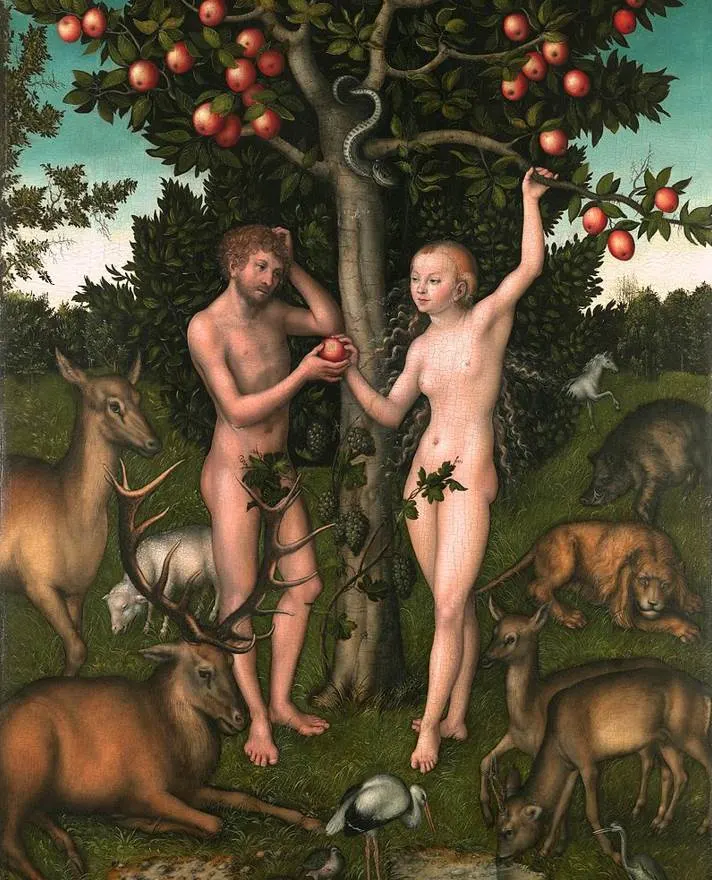
4. Landscape with the Flight into Egypt – Pieter Bruegel the Elder
- Date created: 1563
- Dimensions: 37.1 × 55.6 centimeters (14.6 × 21.9 inches)
Landscape with the Flight into Egypt is a relatively small painting by Pieter Bruegel the Elder (1525-1569) that features a vast landscape. It’s a Bruegel painting that depicts the story of the Flight into Egypt by Mary and Joseph and their infant son Jesus Christ. The artist included several symbols such as a branch of a tree that forms a cross and a fallen Pagan statue.
The first owner of the painting was Cardinal Antoine Perrenot de Granvelle (1517–1586), an important government official of the Habsburg Netherlands. It was subsequently owned by Peter Paul Rubens (1577-1640), one of the most famous Flemish artists in history.
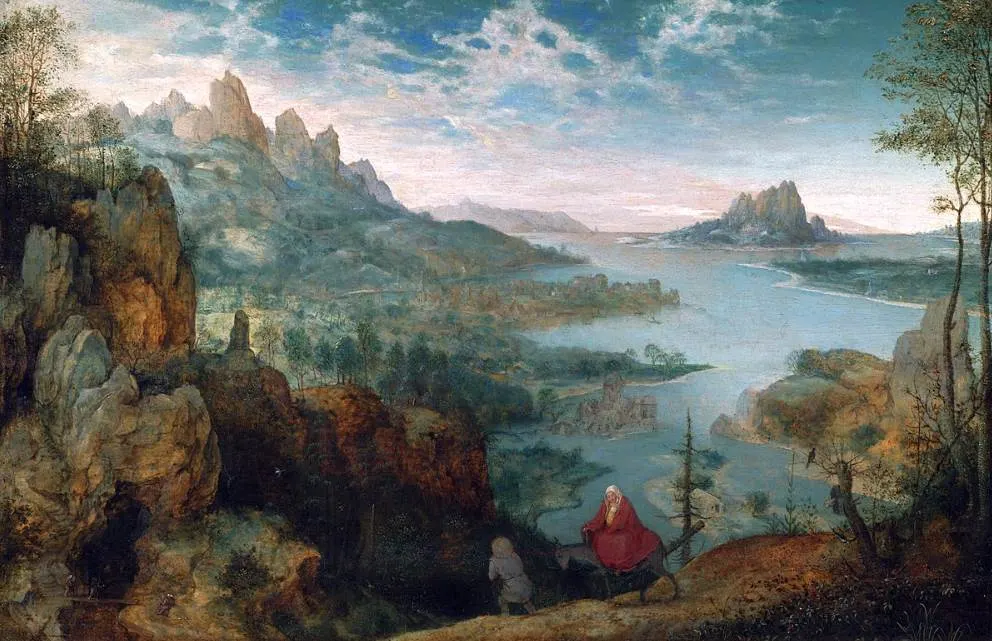
5. The Luncheon on the Grass – Édouard Manet
- Date created: 1863
- Dimensions: 208 × 264.5 centimeters (81.9 × 104.1 inches)
The Luncheon on the Grass or “Le Déjeuner sur l’herbe” was originally referred to as “Le Bain.” It’s not immediately clear why this Manet painting was named as such because the main focus of the work is on the people sitting in the foreground. There is, however, a woman taking a bath in a small pond in the background.
The female nude sitting next to the two gentlemen draws all the attention to herself, especially because both men are finely dressed. The painting was rejected for the Paris Salon of 1863 as it was deemed to be a scandalous work of art. The painting at the Courtauld Gallery was the first version of the work. The other version, which is much darker, is on display at the Musée d’Orsay in Paris.
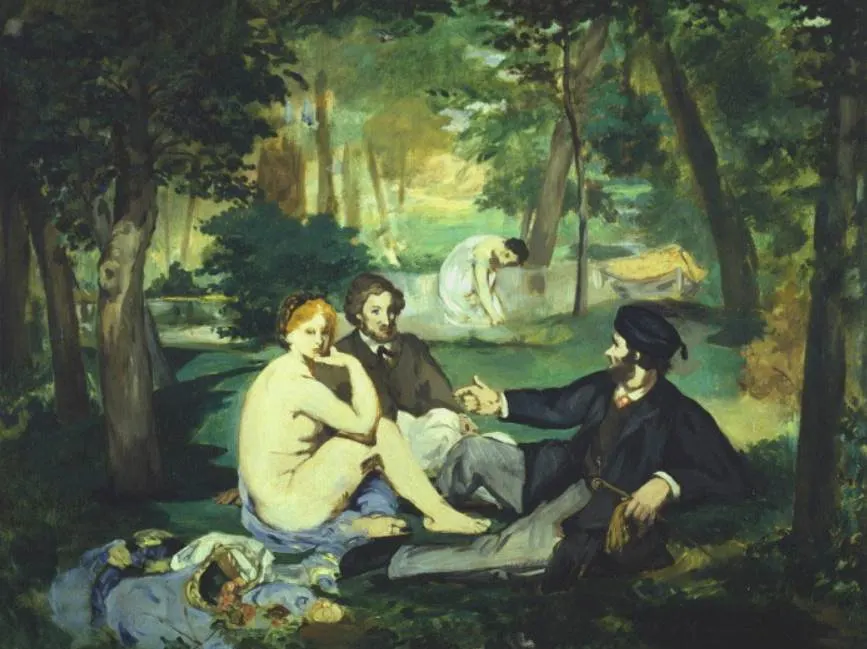
6. The Theater Box – Pierre-Auguste Renoir
- Date created: 1874
- Dimensions: 80 × 63.5 centimeters (31 × 25 inches)
The Theater Box or “La Loge” is one of the most famous paintings by Impressionist artist Pierre-Auguste Renoir (1841-1919). The painting depicts a couple as they attend a performance at a theater in Paris. It was part of the first exhibition of Impressionists in the year 1874.
The woman has been identified as Nini Lopez, the female model of Pierre-Auguste Renoir who ended up being painted on 14 different occasions by the artist. The laidback man who is looking through his opera glasses in the background is believed to have been the artist’s brother Edmond. He was a journalist and art critic.
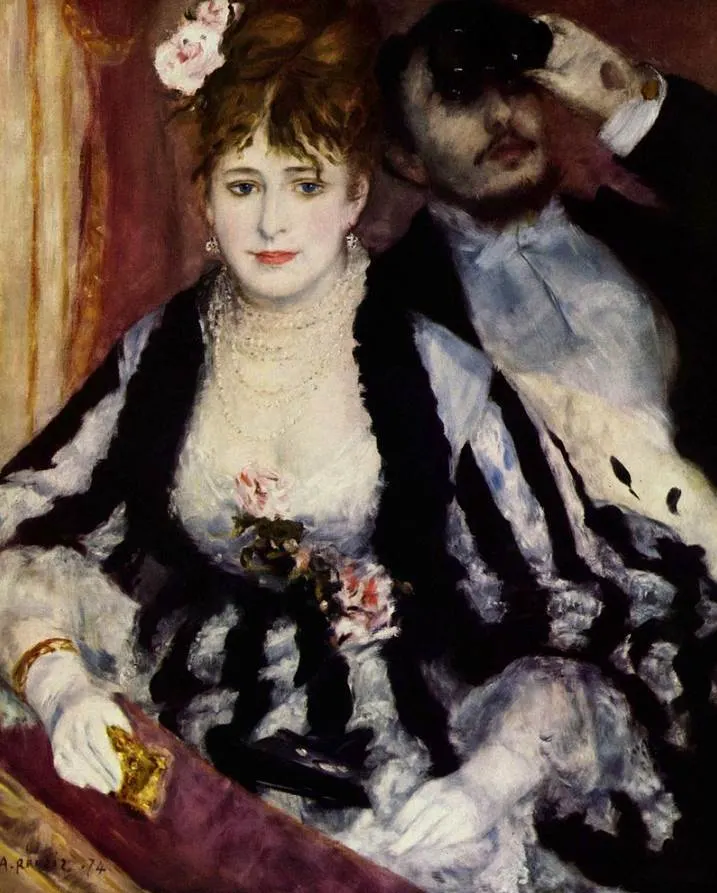
7. A Bar at the Folies-Bergère – Édouard Manet
- Date created:
- Dimensions:
A Bar at the Folies-Bergère is another masterpiece by Édouard Manet (1832-1883), a man who played a crucial role in the transition from Realism paintings to Impressionist paintings. This notion is emphasized by this amazing painting that gives us a glimpse of the Folies Bergère, a nightclub in Paris.
The painting was originally owned by the Romantic composer Emmanuel Chabrier (1841-1894). He was a close friend of Manet and hung the painting above his piano. It’s considered to be the final major painting by the artist who passed away the year after this painting was completed.
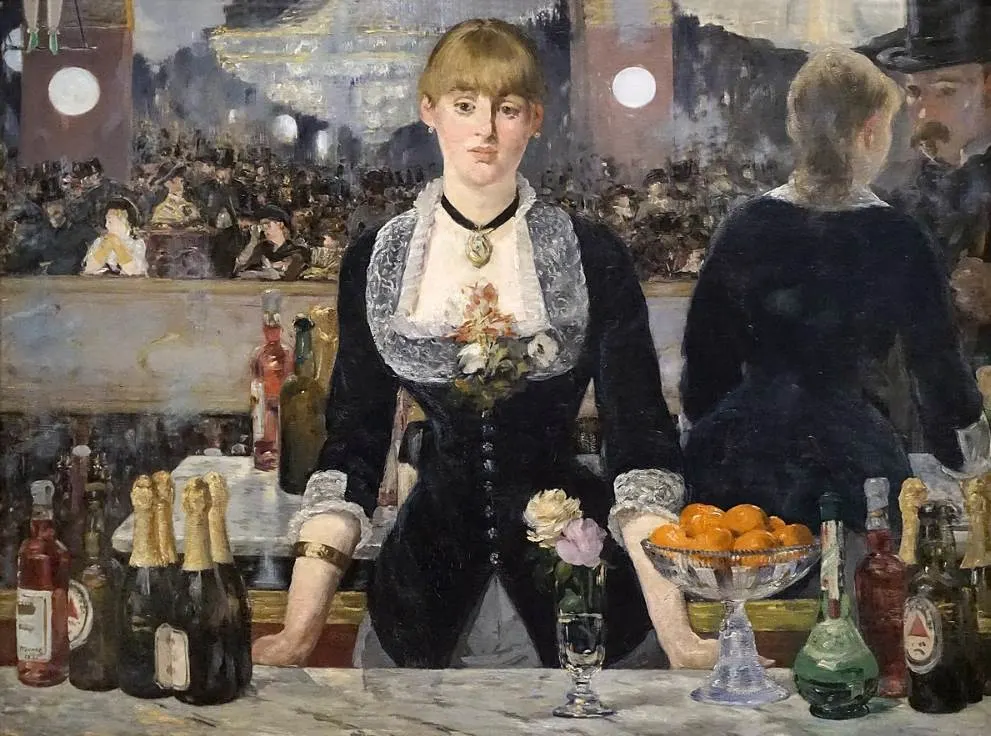
8. Self-Portrait with Bandaged Ear – Vincent van Gogh
- Date created: 1889
- Dimensions: 60 × 49 centimeters (24 × 19 inches)
Self-Portrait with Bandaged Ear is one of the approximately 30 self-portraits by Vincent van Gogh (1853-1890), the troubled Dutch artist who took his own life in July of the year 1890. It depicts him shortly after he suffered a mental breakdown in December of the year 1888, a period in which he was accompanied by fellow Post-Impressionist artist Paul Gauguin (1848-1903).
Gauguin’s visit to Arles was a troubling event and culminated in Vincent cutting off part of his left ear. He painted this remarkable work in January of 1889, shortly after he was released from the local hospital. We can see Japanese art in the background, something that van Gogh had been interested in for several years at that time.
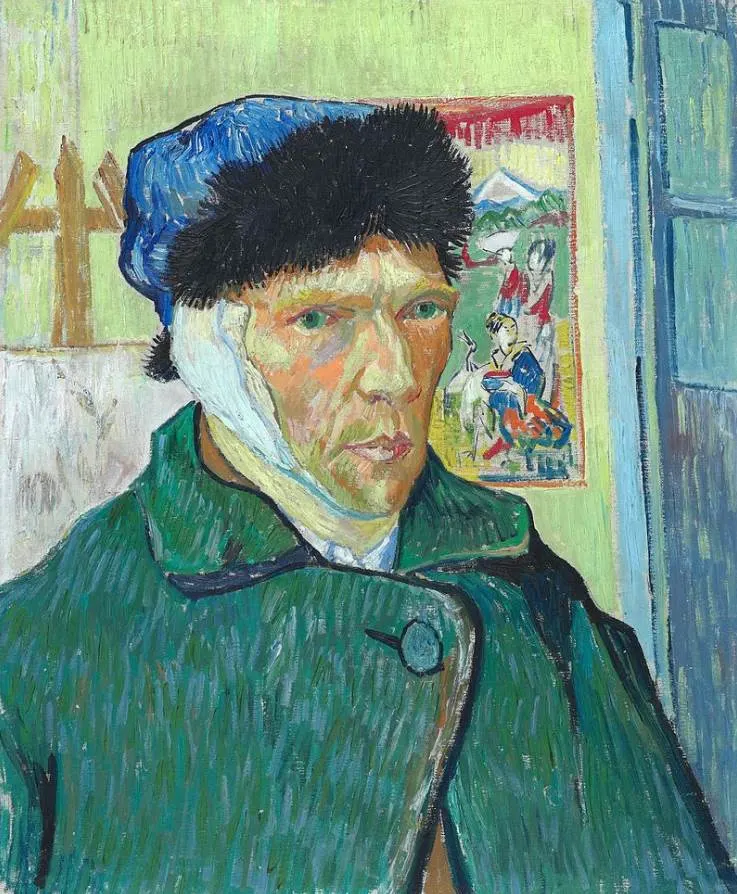
9. Nevermore – Paul Gauguin
- Date created: 1897
- Dimensions: 96 x 130 centimetres (38 × 51 inches)
Nevermore is a painting by Paul Gauguin, a French artist who spent extended periods on the island of Tahiti in the South Pacific. This painting was produced in 1897, 6 years before he passed away and during his second stay on the island.
The word “NEVERMORE” is a clear reference to a poem called “The Raven” by Edgar Allen Poe (1809-1849). The raven is another element that points towards this. The woman lying on the bed was the young wife of the artist named “Pahura” who was mourning the loss of her first child (which she had together with Gauguin).

10. The Card Players – Paul Cézanne
- Date created: 1892-1895
- Dimensions: 60 x 73 centimeters (23.6 x 28.7 inches)
The Card Players is the name of 5 different paintings by Paul Cézanne that depict the same subject, although each composition features different elements and colors. These works were all completed between 192 and 1895 but art historians are still debating in what order.
Three paintings feature just two figures who are concentrating on their cards and the painting at the Courtauld Gallery is one of these. A slightly larger version featuring two players was sold to the Royal Family of Qatar for $260 million in 2011, the equivalent of over $300 million today.

